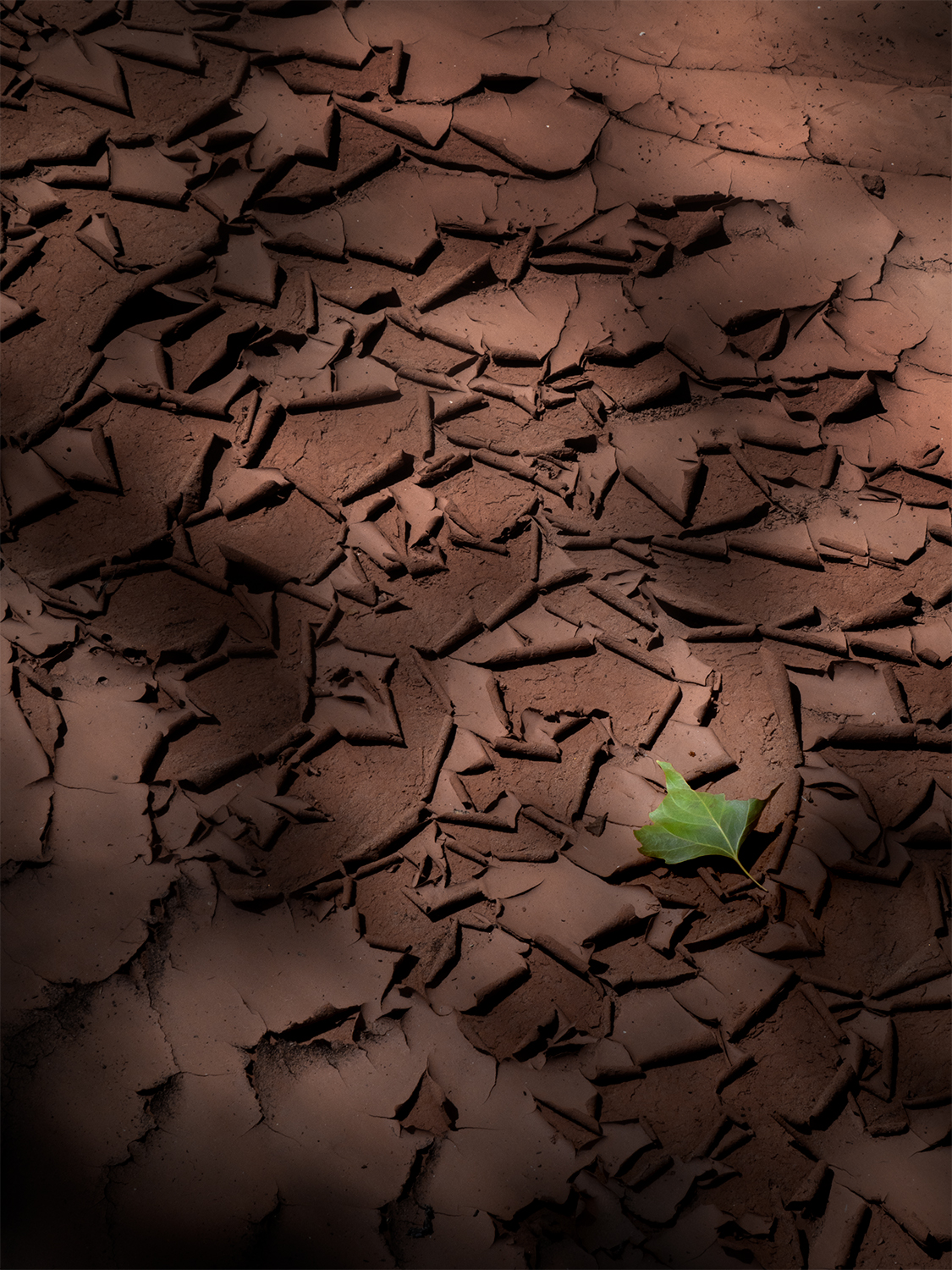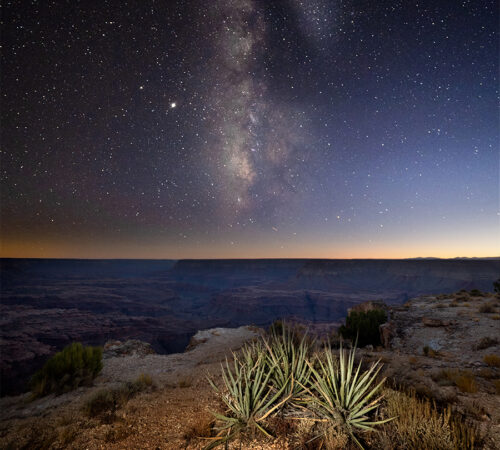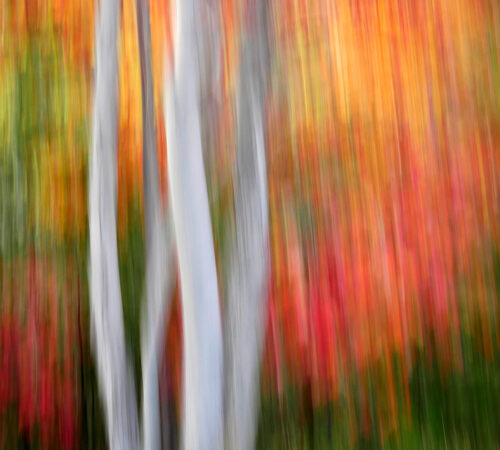Counting to Three

Dear Bubbles:
Word on the street says you have something called a “Three-Second Rule.” If this is true, can you please explain what it is?
~K
Dear K:
The rumor is true!
Some people like to call photography “the art of seeing.” I disagree. I believe it’s “the art of perceiving.” Perceiving implies we use the five defined senses—sight, sound, smell, touch, and taste—and less-defined intuitions to create meaning. If you are using photography to express yourself as I do, then to create an outward expression of this meaning through a photograph, you must perceive (not just “see”) before making a photograph. The seed for our expressions (a.k.a. our vision, our visual message, the purpose of our photograph) comes from our interpretations of the world around and within us.
The ability to recognize meaningful-to-us things in the present moment is the basis of mindfulness. I’d argue that it’s the most undervalued, but incredibly important and powerful, skill to possess as a photographer. That’s what the Three-Second Rule is: paying attention, not just to the outer landscape but also to our inner workings as well.
The Three-Second Rule is something I made up for myself to help me decide when to make a photograph. It’s simple. If I am walking around and something makes me pause for more than three seconds—one one thousand, two one thousand, three one thousand—then I am required to make at least one photograph of whatever “it” was that stopped me from moving along.
The Three-Second Rule usually gets triggered by the “OMG-Look-at-That” and the “WHOA-That’s-So-Cool” Sentiments. If I hear either of those sentences (or variations thereof) in my head or out loud (yes, even when I’m wandering alone), then I then must stop and look for at least three seconds which means I’m required to make at least one photograph of it.
(To be sure, the Three-Second Rule is an invitation to study something or some moment more closely. I do not necessarily snap the shutter in the fourth second. Or even the fifth or sixth. Sometimes, I don’t know immediately what “it” is. Sometimes, it takes much longer than three seconds for my brain to figure out what’s happening in the moment, how to organize the visual chaos (both out there in the environment and in my brain), what visual elements I have available to use, how I’m going to arrange my frame—what to leave in, what to take out—what equipment I need to achieve that goal, press the shutter, and evaluate whether what I experienced came out of the camera. Unless you’re in the middle of a fleeting moment, you have time to sort this out. As you practice this more contemplative approach, you get faster at it as it becomes more second nature to you. If you’re photographing a fleeting moment, then intuition and your abilities kick in.)
Regardless, photography is not an Olympic sport. It’s not a race or a timed activity. No one cares if it takes you three nanoseconds or three days to create your image. The important part is that you do, and you do so in a way that’s meaningful to you, however long it takes. Same goes for mindfulness. It doesn’t matter if it takes you three nanoseconds or three days to notice what’s important to you, just that you do.
This Three-Second Rule approach acknowledges and honors our experiences and our connections with the landscape in a specific and special moment. It recognizes that parts of our subconscious are a critical component of our image-making process. It’s also a way for us to catch invisible gorillas. Yep, that’s right, invisible gorillas. They are everywhere…
The notion of the “invisible gorilla” came from an experiment led by two researchers, Christopher Chabris and Daniel Simons. The experiment called for an audience of subjects to count the number of basketball passes one of two basketball teams made during a set period of time. The experiment starts. The teams weave between each other. The basketball gets passed repeatedly by the one team. In the middle of the experiment, a girl dressed in a gorilla suit casually walks into the middle of the experiment (while the action is still happening), beats her chest for nine seconds, then casually walks out of view.
The experiment stops. The audience of subjects are asked at least two questions. One, how many basketball passes did the team make? Everyone gets the answer correct. Then two, did you notice anything unusual about the experiment?
Fifty percent of the audience did not see the girl dressed in a gorilla suit beating her chest right in front of their eyes for NINE seconds. FIFTY percent. Do you know how long nine seconds is. Time it on your stopwatch, I’ll wait. It’s an eternity.
Some of you may be shaking your heads and saying “No way! That’s crazy town!” I agree! It is! But try it yourself. Visit http://www.theinvisiblegorilla.com to learn more, see additional videos, and pick up a copy of their insightful book.
Chabris and Simons were testing a concept called inattentional blindness. This experiment and others like it showed that when you’re focused on one task, you often overlook other things happening around you. What we think we see and what we actually see might be two different things.
Our eyes and brains are bombarded by gazillions of stimuli each and every second of each and every day. Our brains can’t handle this onslaught of information. It filters most of the extraneous material to focus on things that catch our attention based on things like our expectations (i.e., do we expect a gorilla in the middle of a basketball game?!?), how important is something to our survival (i.e., is the gorilla in the middle of a basketball game going to hurt us?), our ability to concentrate, our working memory capacity, how stressed we are, and how conspicuous something appears. Seeing a gorilla wasn’t important enough to notice when the critical task at hand was counting basketballs.
The same thing goes for our photographic outings. If you set out with defined visualizations or are so focused on making a photograph of a particular location or event, chances are pretty darn good, that’s all you’re going to notice. Which might be fine and dandy, but it also reduces (if not eliminates) the possibility of an infinite number of other opportunities—the invisible gorillas—that might yield more interesting and exciting photographs. How will you ever know if you don’t dare to look more closely?
Mindfulness helps us spot those hidden gems of opportunities—that is, the invisible gorillas. Mindfulness per dictionary.com is “the quality or state of being conscious or aware of something” and also “a mental state achieved by focusing one’s awareness on the present moment, while calmly acknowledging and accepting one’s feelings, thoughts, and bodily sensations….”
Other words and terms that are like mindfulness include pay attention, notice, observe, increased awareness, look around, valuing each moment, explorations, contemplative, developing insights, and forest bathing (a Japanese-based exercise more formally known as shinrin-yoku). The one that I hear used most often in photography is “Slow down…” And it makes me bonkers.
Those of you who know me know that I am not a slow person. Telling me to slow down is as effective (and as annoying) as telling me to put the fork down when there’s half a slice of delicious pie left on my plate and I have three seconds left to eat it. Slowing down just isn’t in my DNA. But I have learned over time to pay super keen attention at my own comfortable pace via my very own Three-Second Rule, thank you very much.
In a similar vein, sometimes when I suggest mindfulness, some people respond with “I can’t do that, I can’t sit still for that long.” Mindfulness does not dictate how you pay attention, just that you do. In fact, forest bathing—as well as my Three-Second Rule—specifically suggests that you’re actively physically and mentally involved as you walk around. Mindfulness is not disengagement. It does not call for zoning out or staring off into space.
To be clear, according to Jon Kabat-Zinn, who is the creator of the Mindfulness-Based Stress Reduction program, the seven principles of mindfulness are:
- Non-judging (mushin)
- Embracing a beginner’s mind (shoshin)
- Non-striving (autotelic approach)
- Trust in self (abilities, skills, feelings, etc.)
- Patience
- Acceptance of present moment exactly as it is
- Letting go
I don’t go out on photo shoots. (My photo workshops are an anomaly to this, and I’m working on adjusting this in the future…). Instead, I embrace all seven parts of this mindfulness attitude as I hike, stroll, drive, or paddle. My camera just comes along with me to help me express what I experience in these adventures—if it’s meaningful enough to me to want to commemorate in a photographic frame.
For example, I never intended to make the photograph at the top of this post. I set out on a hike with a friend in southern Utah earlier this summer. I marveled at the towering cliff walls of the canyon, smelled the rich, humid earthiness of the monsoon sky, and felt the coolness of flowing creek sliding through my fingers. When I came upon this vignette on the ground, I shouted, “Oh look! Dried mud!” Jokes about how outdoor photographers can’t resist the sight of mud might have been shared with my hiking buddy.
But then I started studying the scene as the shadows from a nearby cottonwood tree swayed in the breeze. I loved how the light danced around the lone leaf (an invisible gorilla I only noticed because I had paid closer attention to the impact the breeze was having on the scene). One one thousand. I loved how it felt—I felt—hopeful in that moment. My emotional connection with the land! Two one thousand. I loved how it reminded me that there’s more to life than slogging through mud. Even deeper meaning! Three one thousand. When the light and shadow worked together in perfect harmony to express these perceptions and meaning, SNAP! I made this photograph.
Call it whatever you wish. Mindfulness. Paying Attention. The Three-Second Rule. Maybe it’s the Seven-Second Rule for you. No matter. The point is—even though it may sound counterintuitive—the best way to make more meaningful photographs is not through forcing yourself to make a photograph but rather by letting your curiosity, wonder, and awe fuel your expressions.
Some of you may be shaking your head and saying “No way! That’s crazy town!” I agree! It is! But try it yourself. Instead of setting out with the expectation of making photographs, try going on a walk or a hike or a paddle with the sole purpose of simply noticing what you notice. Embrace Kabat-Zinn’s principles. If you’d like more guided practice with this, pick up a copy of Rob Walker’s book, The Art of Noticing: 131 Ways to Spark Creativity, Find Inspiration and Discover Joy in the Everyday. See what transpires!
But definitely bring your camera just in case you find yourself counting to three and there are invisible gorillas jumping out of the trees…
Be well, be brave, be wild,
~Bubbles
If you liked this post and others like it, please consider supporting Dear Bubbles either through a monthly contribution through Patreon or a one-time donation through Buy Me a Coffee. Learn more about both at https://dearbubbles.com/support.
Have a question about photography, art, and/or the creative life? Need some advice? Looking for inspiration? Send your question to Dear Bubbles at colleen@colleenminiuk.com to be possibly featured in a future column post. (If you’d prefer a different display name than your real first name, please include your preferred nickname in your note.




